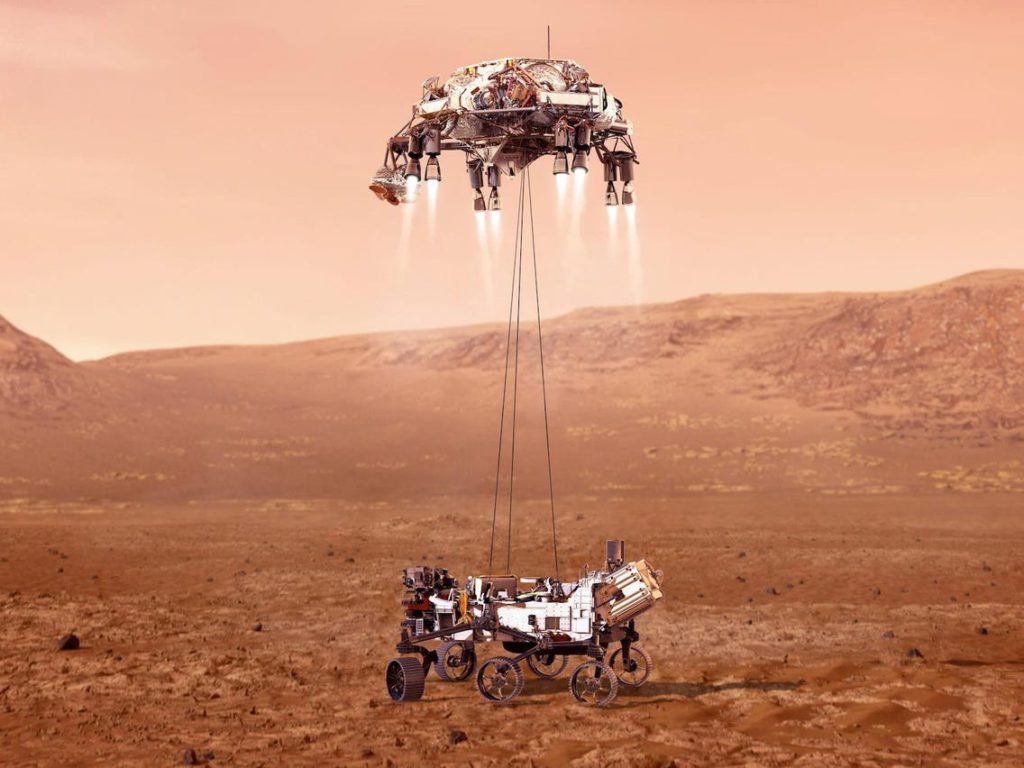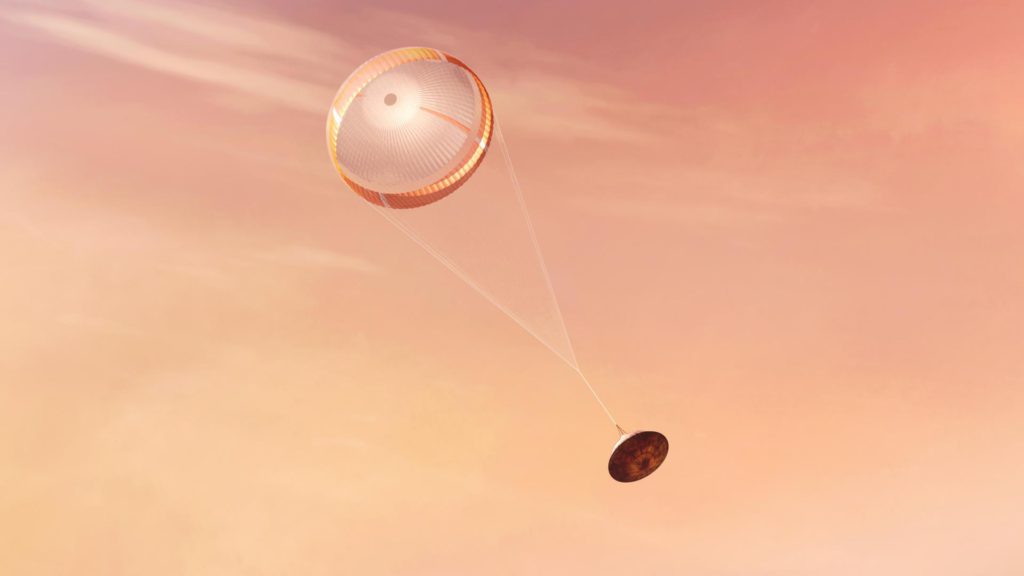
The ever-changing world is full of mysteries but what we know is that all the things in our surroundings are a consequence of the Big Bang. From time to time, different theories have been put forward to find out the cause of the Big Bang and the origin of the cosmic world. Similarly, the fact that life only exists on Earth has been a mystery. However one planet among the other planets of the solar system has some characteristics that show maybe life would exist on it. For many years, the scientists are trying to find evidences of life on the planet Mars by sending different spacecrafts under different missions. Recently, the National Aeronautics and Space Administration (NASA) got success in landing its Perseverance Rover on the surface of Mars.
Today, there are more spacecrafts of several countries operating in the orbiter of Mars than any other planet besides Earth. But, NASA remains the only space agency to have operated a spacecraft on the Martian land. For many years Mars has interested the researchers who have carried studies on the heavenly body to find out about the microbial life on it. NASA has sent its spacecrafts consisting orbiters and rovers multiple times. Apart from the USA, USSR was also successful in sending its orbiters to Mars’ orbit. Even India has also sent its orbiter Mangalyaan to the planet’s orbit. Currently, China and UAE also became successful in sending their spacecrafts to the orbitary region of Mars.
Mars: Planet Full of Curiosity
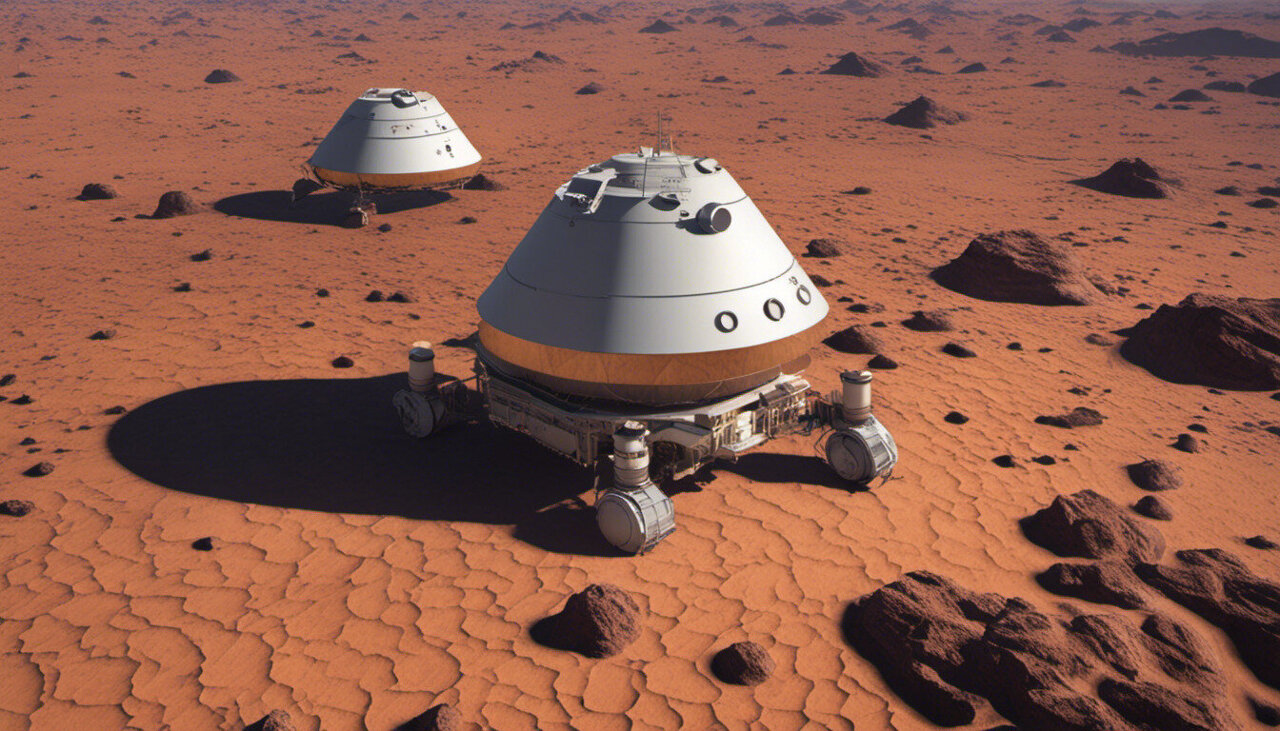
Mars is the fourth planet from the sun and the second smallest planet in the solar system. Its regolith or surface material is rich in iron oxide which gives it a reddish appearance. Therefore, it is also known as the red planet and this makes the planet distinctive among the astronomical bodies visible to the naked eye. It has a solid surface made of silicate rocks and metals. Its nearness to the earth and distinct qualities make it a planet of greater significance. The ancient Greeks and Romans named Mars after their god of war because of the orange-red colour which they associated with bloodshed and war.
Mars rotates on its axis every 24.6 Earth hours and this defines the length of a Martian day and is called a sol (short for “solar day”). The planet rotates on its axis with a tilt of 25.2 degrees relative to the plane of the planet’s orbit around the sun. Mars also has seasons similar to earth. All these things increase the curiosity about possibility of life among scientists about the planet.
NASA’s Perseverance Rover:
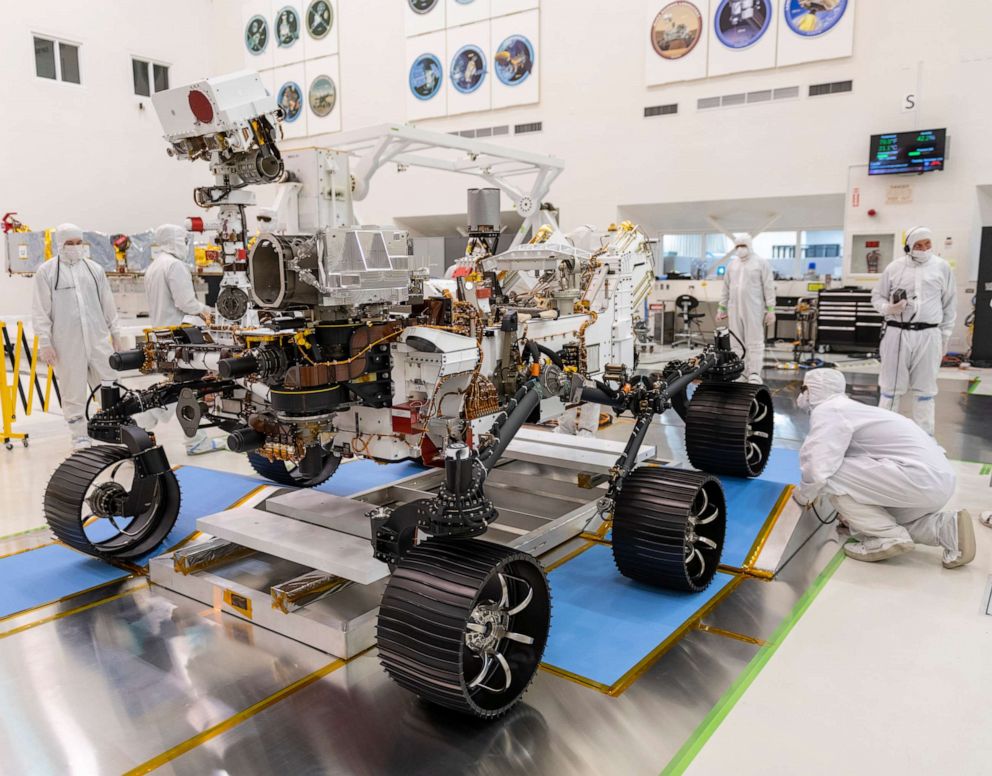
The space agency launched Perseverance Rover on 30 July 2020. The rover successfully landed on 18 February 2021 around 2:30 am on the Mars’ Jezero crater, after completing the journey of seven months. Percy is a nickname given to the Perseverance Rover. It is a car shaped machine that looks similar to the previous rover—Curiosity of NASA. The Perseverance carries seven primary payload instruments, 19 cameras, and 2 microphones. The rover is also carrying a mini-helicopter called Ingenuity. It is an experimental aircraft that will attempt the first powered flight on another planet.
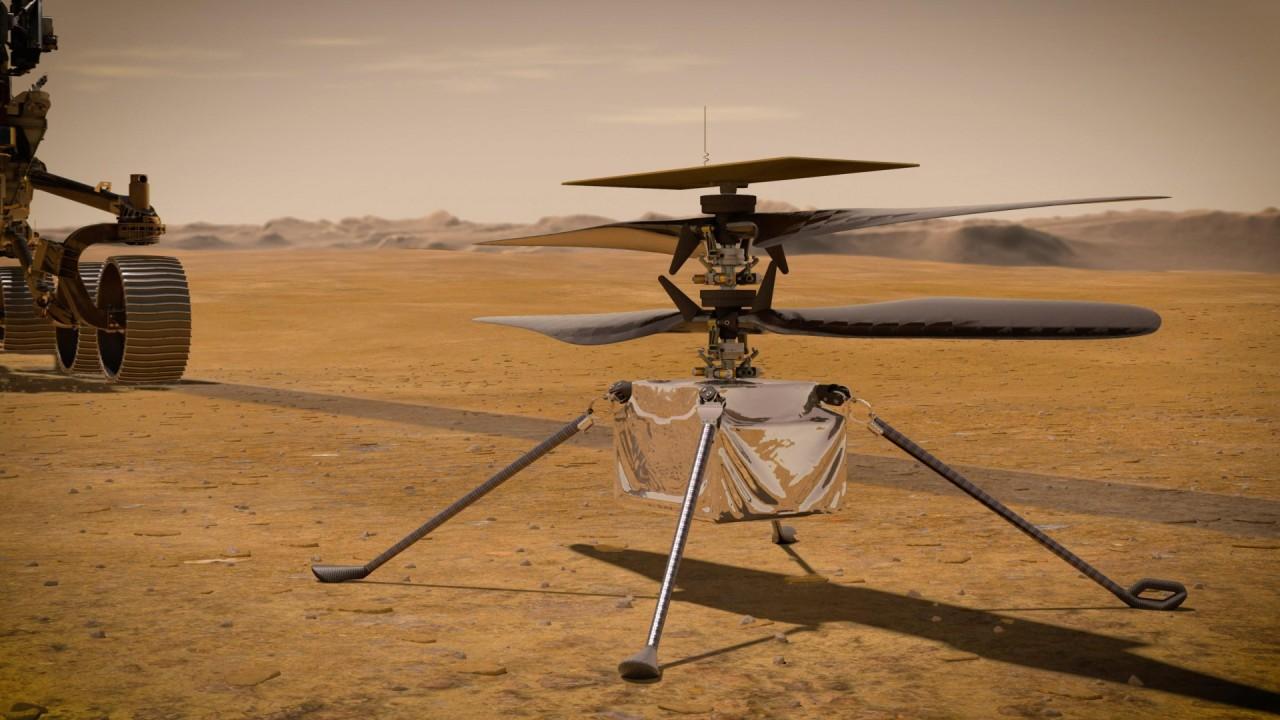
Why did NASA need to launch Perseverance Rover?
For years, NASA is systematically trying to find out evidence of life on Mars. NASA’s Spirit and Opportunity rovers confirmed that liquid water once existed on the Martian surface. Following this discovery, the agency’s Curiosity rover found conditions on Mars suggesting that about 4 billion years ago the planet could have supported life. Now, Perseverance will directly search for signs of past life.
The NASA Perseverance rover landed in Jezero crater, a site of an ancient lake and river delta. There, the rover will search for microbial fossils in rocks that could have been formed in Mars’ warm and wet past. It will also look for carbon-containing molecules called organics that form the building blocks of life on Earth. Perseverance will also collect soil and rock samples as it travels, and store them in tubes for future missions by NASA.
Landing of NASA Perseverance Rover:
Perseverance can operate through dust storms that block sunlight required by solar-powered spacecraft. To land, NASA Perseverance rover had to survive a 7-minute landing sequence referred to as the “7 minutes of terror.” The signal in the Martian atmosphere takes 11 minutes and 22 seconds to reach Earth. So, it was very difficult to operate the rover by sending signals from Earth. Scientists created the rover with the technology of artificial intelligence and therefore, the rover had to perform all the functions on its own. So, the landing involved a supersonic parachute, a thruster-powered descent, and nylon cords that lowered Perseverance for the final few meters towards the surface.
Tianwen-1, or ‘Questions to Heaven’:

China also included itself in the list of countries that sent their spacecrafts to Mars. China launched its orbiter and rover called Tianwen-1 meaning ‘Questions to Heaven’ from Wenchang spaceport on July 23, 2020. The orbiter traveled nearly half a billion kilometre to rendezvous with the Red Planet. China National Space Administration (CNSA) started this mission by sending a robotic spacecraft to Mars for the first time. The spacecraft consists an orbiter, deployable camera, lander, rover and carries 13 scientific instruments. It has a total mass of nearly five tons and became one of the heaviest probes launched to Mars. After 7 months of transit, it entered the orbit of Mars on 10 February 2021.
The space probe will study the target site for landing from a reconnaissance orbit for the next 2 months. Then in May or June 2021, the spacecraft will begin to land on the surface of Mars with the release of the capsule. Scientists projected to make an atmospheric entry followed by a descent phase under the parachute. Later, the lander will use its propulsion to land smoothly on Mars. If everything works according to plan, then lander will deploy the rover. Tianwen-1 will explore the surface of Mars for 90 sols (Mars days). The orbiter will serve as a telecommunications relay during the rover’s primary mission. It will also position itself in an orbit more conducive to observations while retaining its role of relay. The spacecraft will also look for the signs of past life and the presence of water in the Martian atmosphere.
Hope Mission of UAE:

The UAE’s spacecraft entered into the orbit of the Red Planet on 9 February 2021. After reaching Mars, UAE became the first Arab nation in history to have a scientific presence near Mars. Mohammed bin Rashid Space Centre (MBRSC) designed, developed, and led the mission. The centre named the spacecraft ‘Hope orbiter’ and called the mission ‘Hope mission’. MBRSC launched Hope mission on 19 July 2020. To study the planet’s weather and climate systems, UAE’s space agency has put hope in a wide orbit. This also means it will also capture the planet’s full disk.
It is an orbiter, so it will not land on the surface of Mars but only study the details by remaining in the Martian orbit. The Hope will study daily and seasonal weather cycles including weather events in the lower atmosphere such as dust storms. The spacecraft will also find out how the weather varies in different regions of the planet and other possible reasons behind the planet’s drastic climate changes. It will also add to our knowledge about the loss of hydrogen and oxygen from the atmosphere of Mars.
India’s Mars Orbiter Mission- ‘Mangalyaan’:

India is not behind in the race of reaching to the cosmic world. This mission is a big achievement for India as it completed its first interplanetary mission and became the first country in the world to do so on its maiden attempt. After Roscosmos, NASA, and the European Space Agency, India became the fourth space agency who entered in Mars orbit. In its Mars Orbiter Mission (MOM), Indian Space Research Organisation (ISRO) launched its spacecraft to Mars called ‘Mangalyaan’ on 5 November 2013. Since then Mangalyaan is orbiting around the planet and exploring the planet’s surface features, morphology, mineralogy and atmosphere. However, its primary objective is to develop the technologies that scientists needed for designing, planning, operations and management of an interplanetary mission. It carries five scientific instruments. ISRO is currently monitoring this spacecraft.
What is a Rover?
A rover is a device that is made to move on the planetary surface. It explores the surface of the other planet and collects the sample for study, so it is also termed as a planetary rover. Scientists specifically design a machine that works as a vehicle to move across the solid surface on a planet or other planetary-mass celestial bodies. These are robotic machines that collect information about the terrain and to take crust samples such as dust, soil, rocks, and even liquids.
Orbiter:
An orbiter is a spacecraft that is designed to go into the orbit of a planet. It does not land on the planet; it only revolves around the planet in that planet’s orbit especially one that does not subsequently land. Different countries have sent several orbiters to space. They help in giving clear images and information about the planet they are revolving around.
Conclusion:
The never-ending desire to explore and challenge the boundaries of what we know and where we have been had provided benefits to our society for centuries. Human cosmic exploration helps to give answers to the fundamental questions related to the universe and the history of our solar system. Curiosity and exploration are vital to the human spirit and accepting the challenge of going deeper into space garners enthusiasm of generations. So we will have to wait for the findings. Maybe one day we will have the answers to our all questions related to the cosmic world and we will become more aware about our surroundings.

